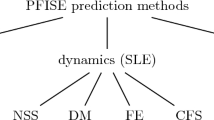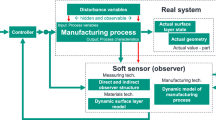Abstract
The surfaces characterization of a component generated from the machining process is important as the surfaces have significant effects on the performance of the component and associated product. The work presented aims to investigate the surfaces functionality characterization of a component by using 3D surface parameters. The paper also investigates the surface generation in relation with the machining process and the associated functionality formation. The corresponding surface characterization is investigated with two case studies on typical engineering components. The generation of the sample surfaces and associated surface functionalities are also studied by MATLAB-based modelling and simulation. The relationship between surface characterization and surface functionality are further studied by the simulations. The paper concludes with discussions on the applications and potential of this approach for the achievement of high quality surfaces, optimization and control of their functional performance at the machining stage.
Similar content being viewed by others
References
Atlintas Y (2000) Manufacturing automation: metal cutting mechanics, machine tool vibrations and cNC design. Cambridge University Press, Cambridge
Stout KJ, Blunt L (2000) Three dimensional surface topography. Penton Press, London
Luo X, Cheng K, Ward R (2005) The effects of machining process variables and tooling characterisation on the surface generation. Int J Adv Manuf Technol 25:1089–1097
Luo XK, Cheng K, Luo XC, Liu XW (2005) A simulated investigation on the machining instability and dynamic surface generation. Int J Adv Manuf Technol 25:718–725
Stout KJ, Blunt L (2000) Development of method for the characterisation of roughness in three dimensions. Penton Press, London
Arcona C, Dow TA (1998) An empirical tool force model for precision machining. J Manuf Sci Eng, 120:700–707
Armarego EJA, Brown RH (1969) The machining of metals. Prentice-Hall, Englewood Cliff
Liu XW, Cheng K (2005) Modelling the machining dynamics of peripheral milling. Int J Mach Tool Manufact 45(11):1301–1320
Author information
Authors and Affiliations
Corresponding author
Rights and permissions
About this article
Cite this article
Aris, N.F.M., Cheng, K. Characterization of the surface functionality on precision machined engineering surfaces. Int J Adv Manuf Technol 38, 402–409 (2008). https://doi.org/10.1007/s00170-007-1340-1
Accepted:
Published:
Issue Date:
DOI: https://doi.org/10.1007/s00170-007-1340-1




